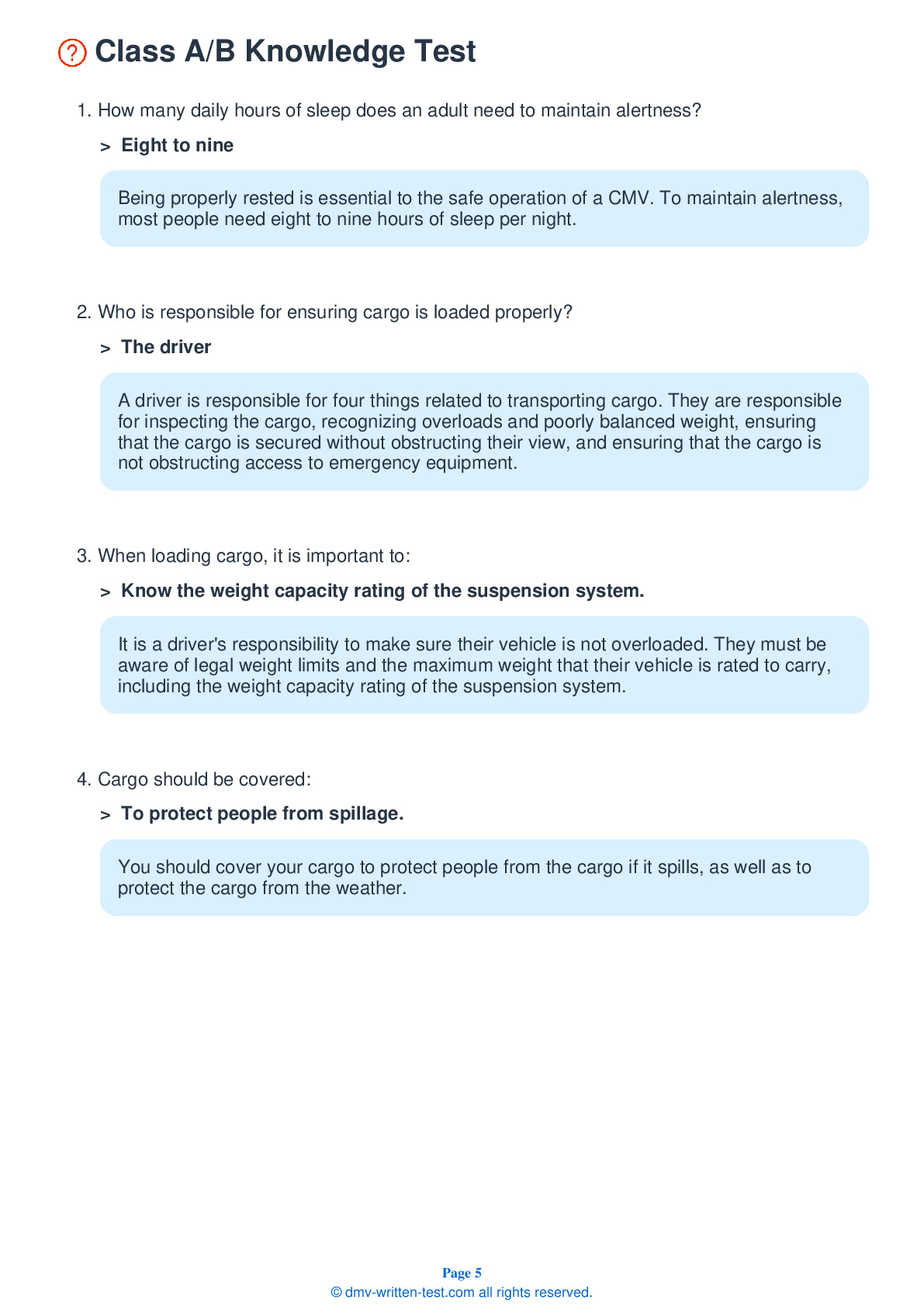Combination
All applicants who are applying for a Class A CDL should be prepared to take the Combination test. This test covers information found in Section 6 of the Commercial Driver License Manual. Section 6 provides the information needed to safely operate tractor-trailers, doubles, triples, and straight trucks with trailers. The test is made up of 20 multiple-choice questions, and applicants will have one hour to correctly answer a minimum of 16 questions. The Combination test is not a replacement for the Double/Triple endorsement test.
Number of Question
Passing Score
1. Failure to keep the fifth wheel plate properly greased could:
Explanation
Failure to keep the fifth wheel plate properly lubricated can create friction between the tractor and trailer, causing steering problems.
2. If a parked trailer does not have spring brakes, you should keep the trailer from moving by:
Explanation
If a parked trailer does not have spring brakes, wheel chocks should be used to prevent it from moving. Air brakes can only hold a parked trailer for as long as there is air pressure remaining in the air tanks, so wheel chocks will ensure safety.
3. A combination vehicle has:
Explanation
Combination vehicles have two air lines: a service line and an emergency line.
4. Avoid needing to make sudden lane changes by:
Explanation
Making a sudden lane change can be dangerous when driving a combination vehicle. Avoid the need to make a sudden lane change by looking down the road for upcoming obstacles that will require you to change lanes.
5. During a trip, which shut-off valves should be open?
Explanation
When starting a trip, be sure that all shut-off valves are in the open position, except for the last valves on the rear trailer. It is important that air reaches the brakes on all trailers and that the air is not able to escape from the back of the vehicle.
6. In a combination rig, it is best to make:
Explanation
When driving a combination vehicle, it is important to brake well in advance and look far ahead of your vehicle to avoid the need for sudden stops. Making habits of these actions will help you prevent your trailer from jackknifing.
7. If a load is placed on one side of a trailer, the trailer:
Explanation




